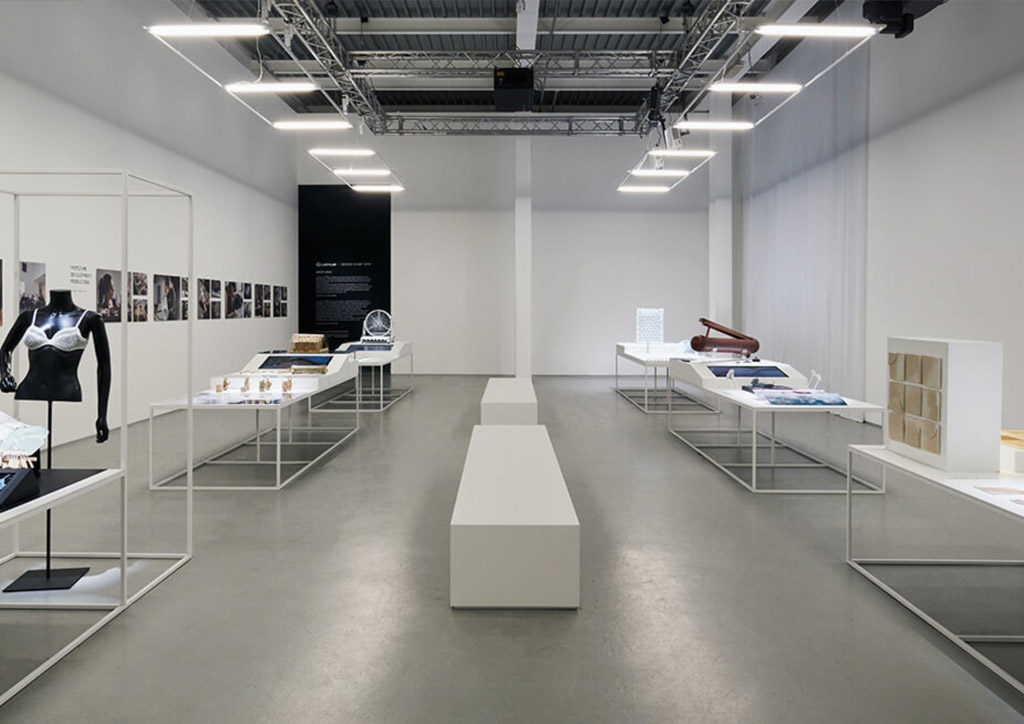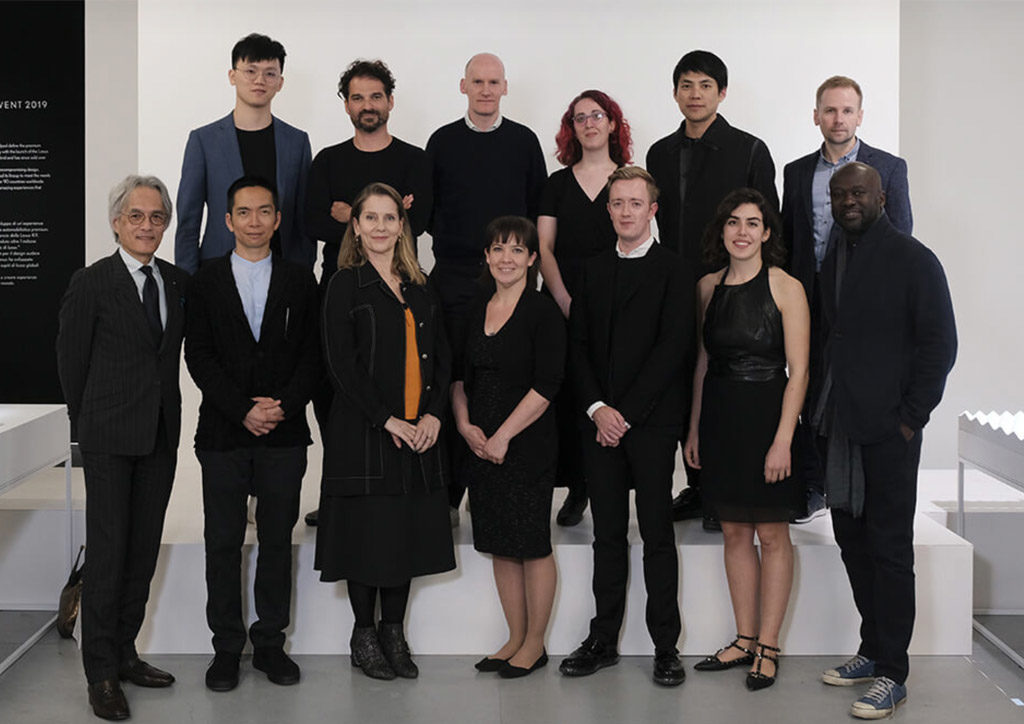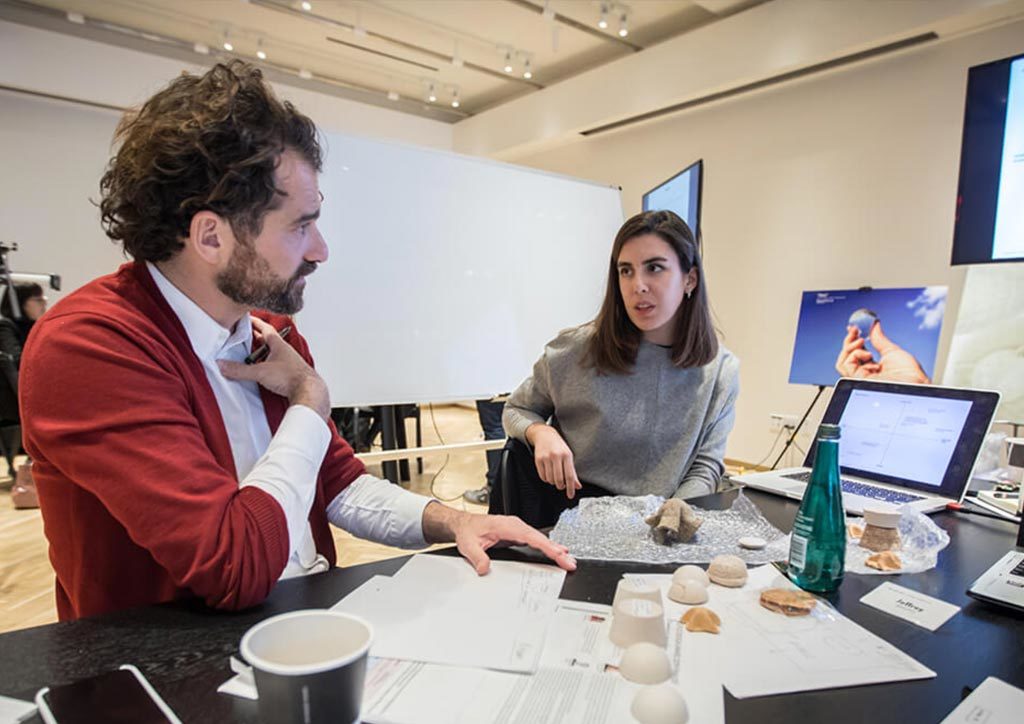Designer Lisa Marks went to Parsons School of Design for both her bachelor and master degrees. After graduating, she also taught in the same institution for several years. “As you can see, I am a very big Parsons fan!” she states. This creative woman claims she has always been an artist and designer. “I think it was the summer after the second grade when I attempted to write my first business plan to be a ceramicist,” she recounts. “I had to get my parents’ help to do the long multiplication, though!” she furthers. At the recently held Lexus Design Award 2019, Marks bested the other 1547 entries from 65 countries. Her Algorithmic Bra is the latest recipient of the coveted design award.

Established in 2013, the annual recognition by Lexus puts into practice its commitment to support and nurture the next generation of designers who share the brand’s belief in the power of design and innovation to shape and usher a better, brighter future. The prototypes from all of this year’s finalists make creative use of technology to design practical solutions that have the power to change and improve lives. These outstanding concepts feature a diverse range of innovative workmanship, novel materials, and never-before-seen applications. “Lexus strives to anticipate, innovate, captivate. We look for talents that share the same values,” says Yoshihiro Sawa, president of Lexus International. “It is a platform to design for better tomorrow,” he furthers.

Out of the many entries, six designs emerged as finalists. The finalists then advanced to develop working prototypes of their ground-breaking designs with mentorship from world-class creators, such as Spanish designer Jaime Hayon, OMA partner Shohei Shigematsu, creative director Sebastian Wrong, and MIT lecturer Jessica Rosenkrantz. These prototypes were then debuted before the design world at the Lexus Design Event held during Milan Design Week, where the Grand Prix winner was crowned by four highly respected design leaders.
The finalists include Rezzan Hasoglu from the United Kingdom, Jeffrey Dela Cruz from the Philippines, Dmitry Balashov from Russia, Shuzhan Yuan from China, and Ben Berwick of Prevalent from Australia. Meanwhile the judging panel include architect Sir David Adjaye, senior MOMA curator Paola Antonelli, head of Design Automattic, Inc. John Maeda, and Yoshihiro Sawa.
On being the Grand Prix winner, Marks was just thankful for the recognition. “It is really unbelievable! I actually put my application in on the last day because I was convinced I did not stand a chance and then a friend and colleague encouraged me to go for it,” she says. “It has been a really amazing and humbling experience to be recognized by so many amazing people in the industry,” she furthers.

10 Questions with Lisa Marks
1. What made you decide to become a designer?
Making things has always been a part of who I am. Design helps me do that while being able to positively impact the world around me. Plus now I teach design so I get to pass that on.
2. What is your design trademark?
I love digital modeling and algorithmic design and I also love hand-crafted pieces. So I especialize in combining those things.
3. How long have you been in the industry?
I graduated from undergrad in 2003. I’ve always been involved in design but it took a few years to really get started. Maybe closer to 2006-2007.
4. Who are your design heroes?
I’ve got so many! I love Antoni Gaudi for his parametric designs. Warren Platner has inspiring process-based work. I love to keep an eye out for more experimental work like Theo Jansen as well. I also really look up to the judges work from the Lexus Design Award—I’ve been long term fans of people like Paula Antonelli and John Maeda for years. The list could go on and on.
5. What do you think was your edge over the other finalists?
I don’t know that I had an edge, per se. They all had such incredible work and I could have seen any of them winning. I just worked as hard as I could and hoped for the best. I think the judges responded to the complexity of the concepts in the project—it looks to improve the world through craft, values history, and education, and applies that to help cancer survivors. So I hope that all the aspects came through to help strengthen the piece.
6. What is your creative process? What is your design vision?
I usually start working from material and process exploration to find what can be done with a technique and then apply that to a product, problem, or user. Many designers start from the user or problem. Both ways are just as legitimate in my opinion, but I love making, so I start from there.
7. How do you define innovative design? Why is it important?
Innovation is a very tricky word and can mean a lot of things. For me it means change, so it applies to design because we are creating something new for the future. It is constant innovation, hopefully to improve things—be it for people, the environment, or for a system.
8. What was your inspiration for your winning entry?
The project started by looking at handmade lace and what we can make with our hands that machines cannot make so that we can value skills that are dying out. By combining it with algorithmic modeling it can be patterned easily to create 3D lace that machines aren’t able to make at this point. With both of those aspects it leads to easy customization so I applied it to women who have had mastectomies since they each have a unique shape.
9. Why a bra? What is the message that you would like to convey?
I think we are in a great time to start thinking about our bodies as unique and valuing ourselves as individuals. Looking at women with mastectomies is applying this idea to one of the groups of people who have more individual form, and they have been through a lot. I hope that this—and projects like this, can contribute to everyone embracing the challenges they’ve been through and seeing their strength.
10. What about the design that makes it so special?
Designers have an amazing ability to imagine what we want the world to be and taking tangible steps towards creating that future. It is why I love being a designer and teaching design. I hope this design is successful in helping us think about how we can both embody confidence through tough times and how we can carry historic craft that’s culturally important forward.



